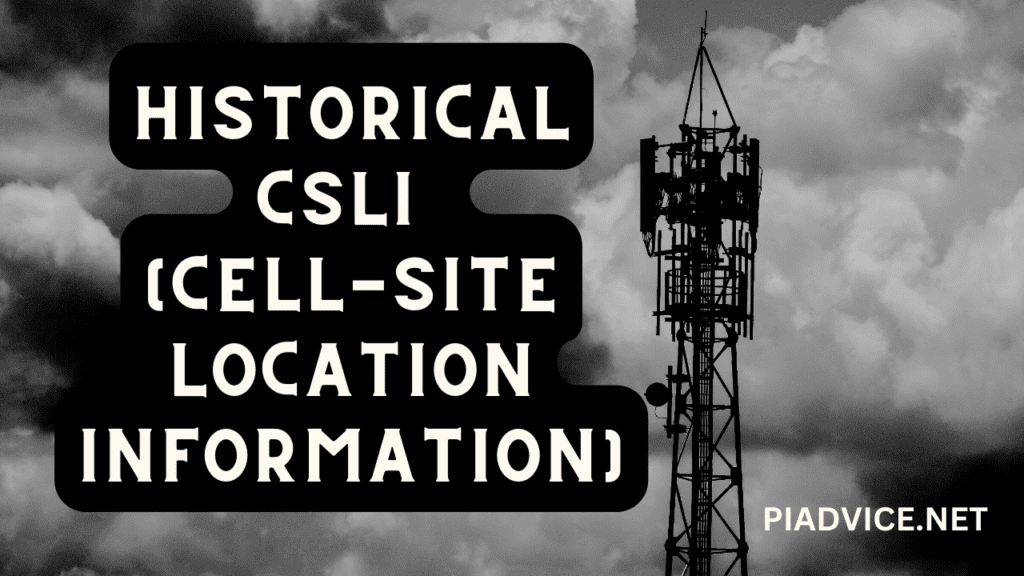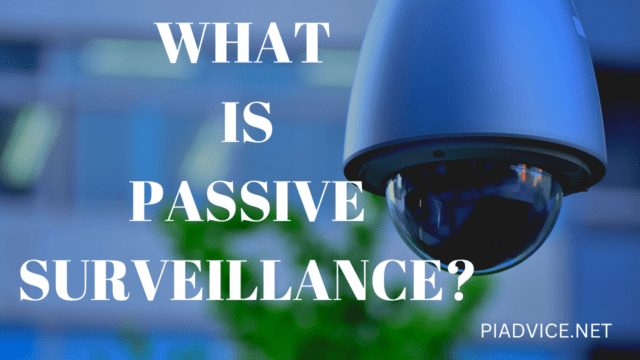There are many different types of surveillance conducted in the world and usually, passive surveillance is not mentioned in the conversation about surveillance. Passive surveillance happens all around us without most people realizing it. So, what exactly is passive surveillance?
Contents
- 1 Passive Surveillance Definition
- 2 Security Camera Passive Surveillance
- 3 External Cameras
- 4 Internal Video Cameras
- 5 Cell Phone Tower Information
- 6 Historical CSLI (Cell-site location information)
- 7 Mail Tracking by the Postal Office
- 8 Phone Records (cellular and landline)
- 9 Corporate Surveillance is Passive Surveillance
- 10 RFID Tracking Passively
- 11 Passive Surveillance Conclusion
Passive Surveillance Definition
Passive surveillance is when data or video is collected continuously without seeking information from that data actively. An example of passive surveillance would be the use of home security cameras. Most people will not review stored video footage unless there is a reason to. So the surveillance cameras record all activity passively until the owner of the cameras needs to investigate something, then documentation is used.
There are many types of passive surveillance that take place around the world. Let’s get into those specific types. Also, if you want to read more in detail about different types of surveillance, you can read that here.
Security Camera Passive Surveillance
We discussed home surveillance cameras as an example of passive surveillance but businesses use security cameras as well and it is used for good reason.
Many companies have both internal and external video cameras which serve many purposes.
External Cameras
While the obvious reason for external security cameras is to act as a deterrent, those cameras are not actively monitored in most cases. The footage collected is stored for a specific amount of time waiting for a reason to be accessed.
If there is a vehicle break-in, a crime committed or someone is injured on the property, the stored footage will be accessed to help determine what happened with the incident and when it happened (time and date stamp on the video).
Internal Video Cameras
Many video cameras within grocery and department stores give the impression they are there for security and loss prevention reasons (stealing). These internal cameras in most cases are not actively monitored.
Generally speaking, stealing is not the biggest financial loss that can happen on a business’s property. Someone getting injured however can cause financial distress to a company. If someone gets injured within a store, the video footage of that incident may provide valuable information as to the legitimacy of the accident. Many times it is determined that a slip and fall accident within a store is not the fault of the store and in some cases, a slip and fall injury is faked.

Cell Phone Tower Information
Cell phone companies and cellphone towers are collecting information from cellphone users constantly. These cellular towers log when a phone is connected to a tower.
The information gathered from cell phone towers may provide value to the cell phone company in regards to usage in an area but that is not the passive surveillance use that takes place.
Historical CSLI (Cell-site location information)
Law enforcement will access historical CSLI information because these sites track the dates and times cell phones connect to towers. This information can be incredibly useful for investigative purposes.
Mail Tracking by the Postal Office
The United States Postal Service or USPS, photographs every piece of mail. This is called Mail Covers or the Mail Isolation Control and Tracking Program. The USPS doesn’t openly share information about this program on its website but there has been much written about this program from other sources.
This information can later be reviewed by law enforcement to see who someone has been communicating with.
You may have already realized they were doing this if you receive photographs of your mail via email.
Phone Records (cellular and landline)
Phone records exist as data stored by phone companies. This data can be accessed by law enforcement for investigations or by other parties with a signed release. Insurance Investigators request signed phone record releases on behalf of the insurance company when they feel it is relevant to an insurance claim investigation.

Corporate Surveillance is Passive Surveillance
Companies like Google, Facebook, Twitter, Amazon, and Microsoft (Bing) track information from users daily. They track your interests, hobbies, location, and more. They track information that many people would believe is meaningless.
Some information collected may not have a purpose but they are storing it as it might be helpful down the road for either themselves or to be sold to someone else.
These companies use this information for purposes of putting product advertisements in front of you.
Some of the information is to provide amazing services like traffic conditions on the Google Maps app.
Some of the information is gathered to feed into bias like on social media platforms. If you lean to a political side, companies like Facebook will serve you more stories from friends or companies that align with your values so they can keep you on the platform longer.
Are there people actively manipulating what you see? No, they have sophisticated programs and algorithms that do all that for them.
This data collection is relatively passive in many cases until they find a need for it later.
RFID Tracking Passively
Companies use badges with Radio Frequency Identification (RFID) technology within them. These cards or badges allow people to gain access to locations and help companies determine where people have been within the building. RFID technology isn’t just for people and badges, it can be used for tracking items as well.
These tracking devices also help these organizations know where people have been based on their access and proximity to receiver devices.
According to William Frick and Company, some of the badges they provide can track people or items between 2.5 inches and 20 feet from the devices.
This information isn’t needed until it’s needed generally speaking. A person or a business might not need to access information unless something has gone missing or an event has taken place.
Schools have also used this form of tracking and many other schools are considering it. This technology will help determine in the event of an emergency where students and staff are if they are wearing their badges. If there is a fire in the building, this technology could help determine where children and staff are trapped to get to them sooner.
From a security standpoint, it can help determine who is coming and going from the school.
Passive Surveillance Conclusion
Passive surveillance on the surface might seem like nothing to be concerned about. However with technology advancing at the pace, it is at, there are times when this technology is not used for good. There are times when this technology is used against law-abiding people.
Unless we abstain from electronic devices and technology, we are being tracked to some degree. Sometimes it is for the good of society and sometimes that tracking can be perverted for power and gain. Be on guard to protect your privacy. Rights are very hard to get back once they are gone.

Recent Posts
Hawaii is probably one of the most interesting states to work as a private investigator if you are not used to the culture or a native of the state. And if you are not a local, that is something...
How to become a private investigator in Georgia

